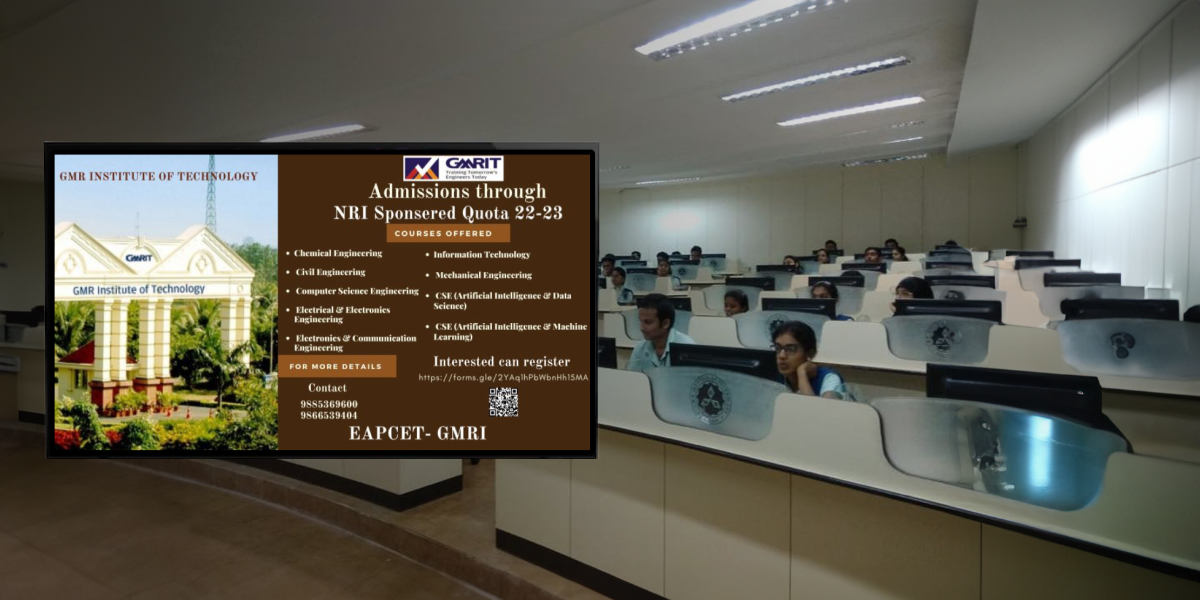Transforming Campus Communication: A Case Study on GMR Institute of Technology's Digital Signage Integration.

The Client
GMR Institute of Technology (GMRIT), an esteemed educational institution, stands as a beacon of advanced learning and technology in Rajam, Andhra Pradesh. Established under the corporate social responsibility wing of GMR Group, a prominent global infrastructure conglomerate, GMRIT is dedicated to delivering exceptional educational experiences. The institution prides itself on its commitment to innovation and its ability to prepare students for the challenges of a dynamic world.
The Challenge
In the sprawling campus of GMRIT, effective communication is pivotal. The institute required a robust solution to display crucial information and disseminate timely announcements to students, faculty, and visitors across its extensive grounds. The traditional methods of communication were no longer sufficient to meet the growing demands of their vibrant educational environment.
The challenge was not only to ensure that the information reached all corners of the campus but also to engage users and enhance their informational experience. This included academic schedules, event notifications, emergency alerts, and other educational content critical for daily campus operations.
The Solution
To address these challenges, GMRIT partnered with Pickcel, a leader in cloud-based digital signage solutions. Pickcel proposed a state-of-the-art digital signage system powered by Android OS, enabling seamless content management and distribution. This technology choice was strategic; Android’s flexibility and widespread support allowed for easy integration and scalability, ensuring that the solution could evolve alongside the institute’s growing needs.
The implementation covered several phases, beginning with the installation of high-definition digital displays strategically located throughout the campus. These screens were connected to Pickcel’s cloud platform, which provided a centralized control panel for content management. This setup enabled administrators to update and push content in real-time, from academic updates to emergency notifications, ensuring information was both current and accessible.
Key Benefits
The digital signage solution revamped the way GMRIT communicated on campus, offering multiple immediate and long-term benefits:
- Enhanced Engagement: The visually appealing displays with dynamic content captured attention more effectively than traditional static posters and announcements, leading to higher engagement and information retention among students and staff.
- Real-Time Updates: The cloud-based nature of the system allowed for instant updates across all screens, ensuring that all members of the campus community received timely and relevant information.
- Cost Efficiency: Over time, the digital solution proved to be cost-effective compared to traditional print media, reducing the need for physical materials and the manpower typically involved in disseminating paper-based communications.
- Scalability: As the needs of the institute grew, the digital signage system could be easily expanded with additional screens and updated software capabilities, making it a future-proof investment.
- Emergency Preparedness: In cases of emergency, the system proved indispensable by providing a quick and effective means to broadcast critical safety instructions, significantly improving the institute’s preparedness and response capabilities.
The Result
The integration of Pickcel's digital signage solution transformed GMRIT’s campus communications landscape. Not only did it streamline the distribution of information, but it also enhanced the overall campus experience by keeping students and faculty informed and engaged. The success of this project has set a benchmark within educational institutions looking to modernize their communication systems.
The digital transformation at GMRIT has been recognized as a model by peer institutions, who are inspired to implement similar technologies to enhance their informational and operational efficiencies. The project's success underscores the importance of embracing technology in education settings, not just for instructional purposes but also for effective communication and community building.
